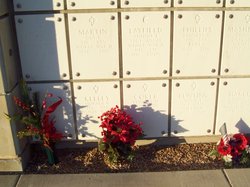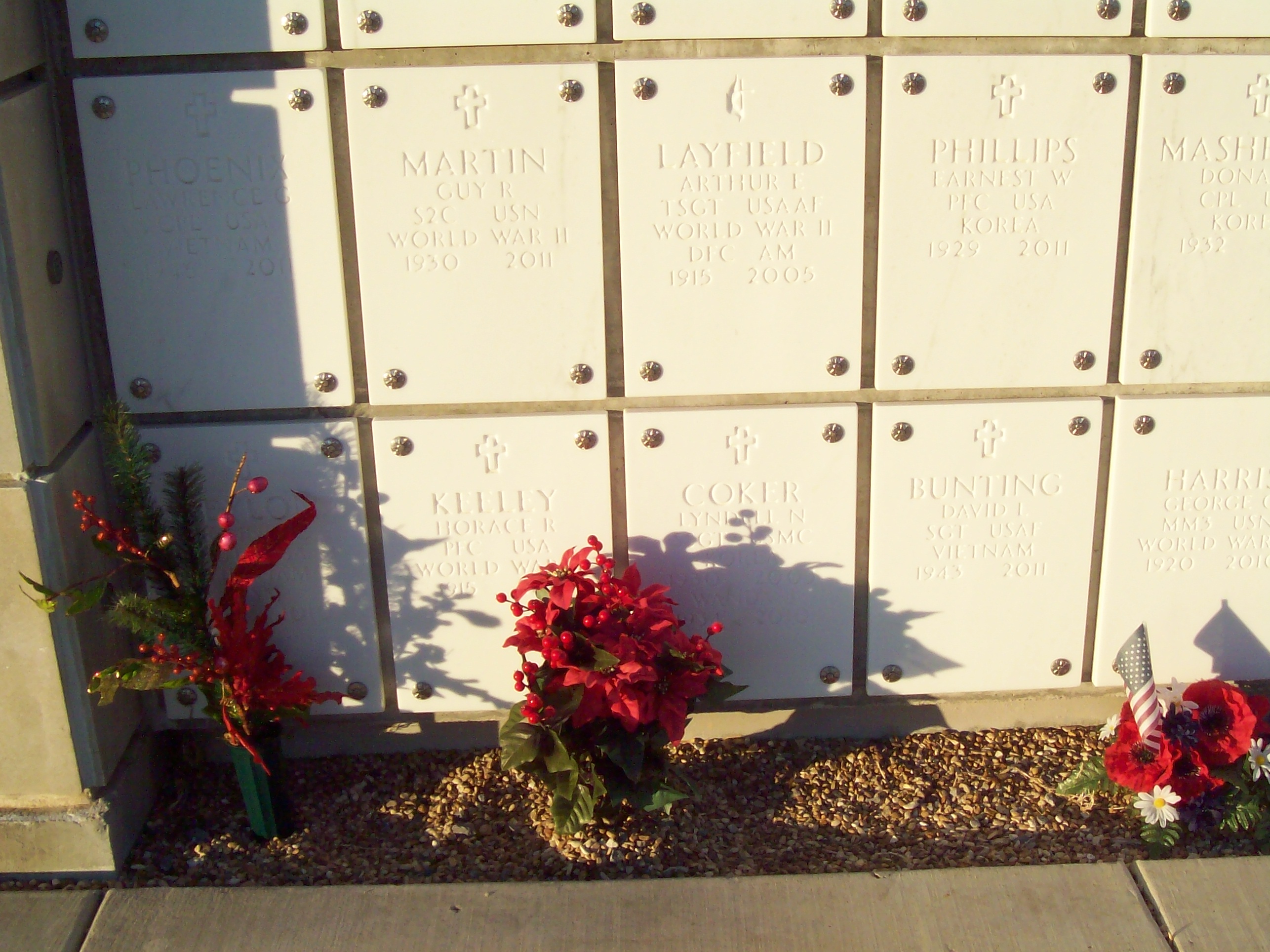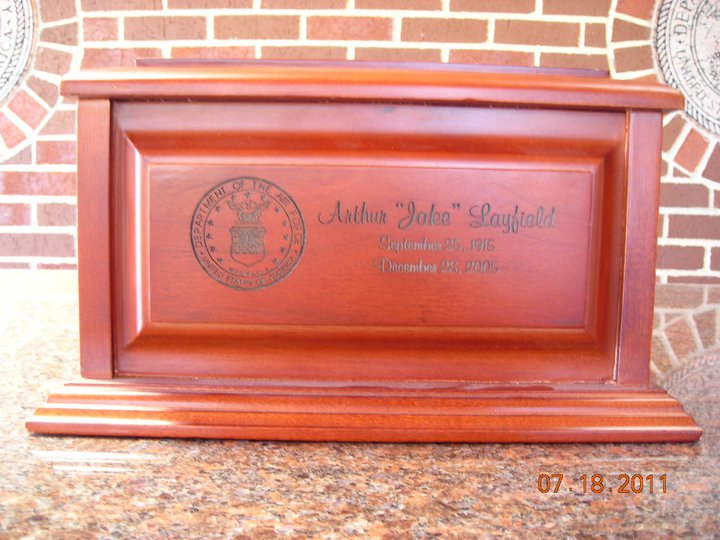Prior to World War II, like his father and paternal great grandfather before him, Arthur was a jack-of-all-things mechanical. He served in the Penn. National Guard for 10 months prior to enlisting in the regular army Nov. 29, 1941 (RA 20325716) at Camp Shelby, Miss. Because of his skills, he held MOS 747 (Aerial Engineer Gunner) and spent the first two years as part of a 3-man cadre teaching new B-17 air crews airframe mechanics throughout the southwest U.S. While he was teaching new engineer gunners during live flights, the pilots would play cards while he flew the plane. While obviously not regulation, this would turn out to save his life.
He was subsequently assigned to Army Air Force ETO (England) with the 339th Bomb Squadron from Apr. 15, 1943 until discharge July 7, 1945 as a Tech Sgt at Ft. Sam Houston, TX. His initial overseas assignment was in Air Offensive Europe (Normandy, Rhineland, Northern France) and on July 15, 1943 he was awarded the Distinguished Flying Cross (9th Air Force GO #102) for flying a disabled B-17 bomber back over France to England before the injured pilot was able to land safely. This event resulted in a live interview on BBC radio heard by his parents and relatives in the United States. The interview was precipitated by a companion story that appeared in the June 28, 1943 issue of Time Magazine, titled "The Flight of the Worry Wort" transcribed below. It gives one a sense of what it was like to fly over Germany during World War II.
• High among the puffy white clouds over Kiel both the pilot and co-pilot of the B-17 Worry Wort were knocked out. Below-zero cold froze the pilot's hands and feet. The co-pilot was dead, a 20-mm. shell through his breast. Ugly flak blossoms unfolded on all sides. In & out among the clouds darted droves of enemy fighters. Worry Wort's chances of getting back to England were next to zero.
• Of that flight, Technical Sergeant Art Layfield later told TIME Correspondent William Walton:
• When we hit the German coast they were throwing everything in the German Air Force at us. Something knocked out half our ship's oxygen system, the half on the pilot's side. Then a bullet tore through the nose. Such a blast of air came in that both pilot and co-pilot began to freeze. One was barehanded, the other had only light dress gloves, and we were above 20,000 feet. Within a couple of minutes the ball-turret gunner had shot down an Me-110 trying to get us, and the radio operator had been wounded. We were getting pretty banged up. Then a fighter made a quick pass at us and sent a shell crashing into the cockpit. Our co-pilot, Steve Bellovay, was hit clean through the breast pocket. He slumped over the instrument panel, but the pilot never wavered a second. He held her steady, straight on toward the target.
• In my top turret I knew it was a bad hit when blood flecked my glass dome. When I could leave my gun for a moment I went down and pulled Steve back from the instruments, where his weight was making the pilot's job even tougher. I lashed him upright with a piece of chute harness.
• About this time the bombardier let lose his load on Kiel. It wasn't too soon because both the bombardier and the navigator were hit a moment later. When the ball-turret gunner came up to help, we lifted Steve out of his seat and laid him along the catwalk above the bomb bays and covered him with flying clothes. We had been handing the captain 'walk-around' oxygen bottles after the regular system got busted. Now we gave him Steve's tube. We saw that Steve didn't need it any more.
• But the captain, Maurice Youngs, needed more than oxygen: he had flak in one arm. His hands were so frozen he couldn't use them. He was trying to run the ship with his elbows. We tried to use the automatic pilot, but it wouldn't work. Then I took over.
• From 18,000 feet I flew the old Worry Wort down about 500 feet per minute, using plenty of speed because we had lots of gas. About an hour and a half later we hit the English coast. Boy, was that a pretty sight! With a little benzedrine in him, Captain Youngs was able to take the controls and bring us in to a perfect landing.
• I sure hope those bombs blasted hell out of Kiel--for Steve's sake.
Arthur was also awarded the Air Medal with 1 Oak Leaf Cluster, 8th Bomber Command June 27, 1943; Distinguished Unit Badge with 1 Oak Leaf Cluster July 31, 1944; and Campaign Medal with 4 bronze stars. ASR score of 116 on May 12, 1945 (2nd highest in AAF-Europe).
On Mar. 3, 1954 at Lower Merion Twp, Montgomery County, PA, Arthur m. (2) the widow [living]. They had one child, a dau. [living] b. in 1962.
On Oct. 1, 1559 at Ecclesfield, West Yorkshire, England, John "Brodbent" m. Alice Jepson. Are John and Alice (Jepson) Broadbent the ancestors of Joseph Broadbent, Jr. of Attleboro, Mass., father of Arthur Edmund Layfield's mother? If so, is the memorialist his own half sister's ancestral double cousin?
Prior to World War II, like his father and paternal great grandfather before him, Arthur was a jack-of-all-things mechanical. He served in the Penn. National Guard for 10 months prior to enlisting in the regular army Nov. 29, 1941 (RA 20325716) at Camp Shelby, Miss. Because of his skills, he held MOS 747 (Aerial Engineer Gunner) and spent the first two years as part of a 3-man cadre teaching new B-17 air crews airframe mechanics throughout the southwest U.S. While he was teaching new engineer gunners during live flights, the pilots would play cards while he flew the plane. While obviously not regulation, this would turn out to save his life.
He was subsequently assigned to Army Air Force ETO (England) with the 339th Bomb Squadron from Apr. 15, 1943 until discharge July 7, 1945 as a Tech Sgt at Ft. Sam Houston, TX. His initial overseas assignment was in Air Offensive Europe (Normandy, Rhineland, Northern France) and on July 15, 1943 he was awarded the Distinguished Flying Cross (9th Air Force GO #102) for flying a disabled B-17 bomber back over France to England before the injured pilot was able to land safely. This event resulted in a live interview on BBC radio heard by his parents and relatives in the United States. The interview was precipitated by a companion story that appeared in the June 28, 1943 issue of Time Magazine, titled "The Flight of the Worry Wort" transcribed below. It gives one a sense of what it was like to fly over Germany during World War II.
• High among the puffy white clouds over Kiel both the pilot and co-pilot of the B-17 Worry Wort were knocked out. Below-zero cold froze the pilot's hands and feet. The co-pilot was dead, a 20-mm. shell through his breast. Ugly flak blossoms unfolded on all sides. In & out among the clouds darted droves of enemy fighters. Worry Wort's chances of getting back to England were next to zero.
• Of that flight, Technical Sergeant Art Layfield later told TIME Correspondent William Walton:
• When we hit the German coast they were throwing everything in the German Air Force at us. Something knocked out half our ship's oxygen system, the half on the pilot's side. Then a bullet tore through the nose. Such a blast of air came in that both pilot and co-pilot began to freeze. One was barehanded, the other had only light dress gloves, and we were above 20,000 feet. Within a couple of minutes the ball-turret gunner had shot down an Me-110 trying to get us, and the radio operator had been wounded. We were getting pretty banged up. Then a fighter made a quick pass at us and sent a shell crashing into the cockpit. Our co-pilot, Steve Bellovay, was hit clean through the breast pocket. He slumped over the instrument panel, but the pilot never wavered a second. He held her steady, straight on toward the target.
• In my top turret I knew it was a bad hit when blood flecked my glass dome. When I could leave my gun for a moment I went down and pulled Steve back from the instruments, where his weight was making the pilot's job even tougher. I lashed him upright with a piece of chute harness.
• About this time the bombardier let lose his load on Kiel. It wasn't too soon because both the bombardier and the navigator were hit a moment later. When the ball-turret gunner came up to help, we lifted Steve out of his seat and laid him along the catwalk above the bomb bays and covered him with flying clothes. We had been handing the captain 'walk-around' oxygen bottles after the regular system got busted. Now we gave him Steve's tube. We saw that Steve didn't need it any more.
• But the captain, Maurice Youngs, needed more than oxygen: he had flak in one arm. His hands were so frozen he couldn't use them. He was trying to run the ship with his elbows. We tried to use the automatic pilot, but it wouldn't work. Then I took over.
• From 18,000 feet I flew the old Worry Wort down about 500 feet per minute, using plenty of speed because we had lots of gas. About an hour and a half later we hit the English coast. Boy, was that a pretty sight! With a little benzedrine in him, Captain Youngs was able to take the controls and bring us in to a perfect landing.
• I sure hope those bombs blasted hell out of Kiel--for Steve's sake.
Arthur was also awarded the Air Medal with 1 Oak Leaf Cluster, 8th Bomber Command June 27, 1943; Distinguished Unit Badge with 1 Oak Leaf Cluster July 31, 1944; and Campaign Medal with 4 bronze stars. ASR score of 116 on May 12, 1945 (2nd highest in AAF-Europe).
On Mar. 3, 1954 at Lower Merion Twp, Montgomery County, PA, Arthur m. (2) the widow [living]. They had one child, a dau. [living] b. in 1962.
On Oct. 1, 1559 at Ecclesfield, West Yorkshire, England, John "Brodbent" m. Alice Jepson. Are John and Alice (Jepson) Broadbent the ancestors of Joseph Broadbent, Jr. of Attleboro, Mass., father of Arthur Edmund Layfield's mother? If so, is the memorialist his own half sister's ancestral double cousin?
Inscription
Cremation Vault
LAYFIELD
ARTHUR E
TSGT USA AF
WORLD WAR II
DFC AM
1915 2005
(DFC = Distinguished Flying Cross; AM = Air Medal)
Family Members
Sponsored by Ancestry
Advertisement
Advertisement












